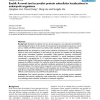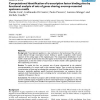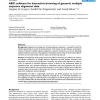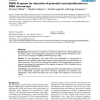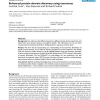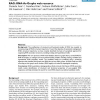BMCBI
2004
13 years 11 months ago
2004
Background: Subcellular localization of a new protein sequence is very important and fruitful for understanding its function. As the number of new genomes has dramatically increas...
BMCBI
2004
13 years 11 months ago
2004
Background: A detailed understanding of an RNA's correct secondary and tertiary structure is crucial to understanding its function and mechanism in the cell. Free energy mini...
BMCBI
2004
13 years 11 months ago
2004
Background: Because loops connect regular secondary structures, analysis of the former depends directly on the definition of the latter. The numerous assignment methods, however, ...
BMCBI
2004
13 years 11 months ago
2004
Background: Transcriptional regulation is a key mechanism in the functioning of the cell, and is mostly effected through transcription factors binding to specific recognition moti...
BMCBI
2004
13 years 11 months ago
2004
Background: Alignment and comparison of related genome sequences is a powerful method to identify regions likely to contain functional elements. Such analyses are data intensive, ...
BMCBI
2004
13 years 11 months ago
2004
Background: Existing sequence alignment algorithms assume that similarities between DNA or amino acid sequences are linearly ordered. That is, stretches of similar nucleotides or ...
BMCBI
2004
13 years 11 months ago
2004
Background: Microarrays have emerged as the preferred platform for high throughput gene expression analysis. Cross-hybridization among genes with high sequence similarities can be...
BMCBI
2004
13 years 11 months ago
2004
Background: It is well known that different species have different protein domain repertoires, and indeed that some protein domains are kingdom specific. This information has not ...
BMCBI
2004
13 years 11 months ago
2004
Background: The proliferation of structural and functional studies of RNA has revealed an increasing range of RNA's structural repertoire. Toward the objective of systematic ...
BMCBI
2004
13 years 11 months ago
2004
